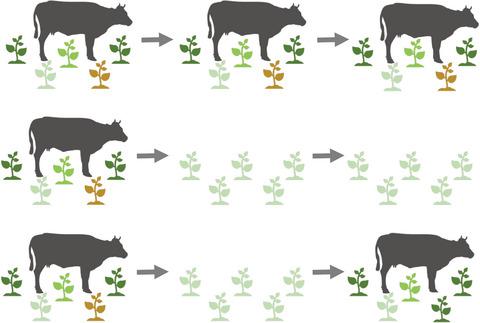当前位置:
X-MOL 学术
›
J. Appl. Ecol.
›
论文详情
Our official English website, www.x-mol.net, welcomes your
feedback! (Note: you will need to create a separate account there.)
Vernal pool wetlands respond to livestock grazing, exclusion and reintroduction
Journal of Applied Ecology ( IF 5.0 ) Pub Date : 2021-09-10 , DOI: 10.1111/1365-2664.14001 Julia S Michaels 1 , Kenneth W. Tate 2 , Valerie T. Eviner 2
中文翻译:

春池湿地对牲畜放牧、排斥和重新引入的反应
更新日期:2021-09-10
Journal of Applied Ecology ( IF 5.0 ) Pub Date : 2021-09-10 , DOI: 10.1111/1365-2664.14001 Julia S Michaels 1 , Kenneth W. Tate 2 , Valerie T. Eviner 2
Affiliation

|
- In disturbance-adapted ecosystems, the removal of disturbance can lead to losses of diversity and sometimes irreversible changes in community composition. It is important to identify the thresholds at which these changes can occur, and to understand the reversibility of these shifts. We examined this question in a vernal pool ecosystem that evolved with low to moderate levels of grazing disturbance. In this system, it is not clear whether the negative effects of long-term grazing exclusion are reversible through grazing reintroduction.
- We compared adjacent vernal pool wetlands in annual Mediterranean grasslands under three grazing management strategies: continuously grazed (100+ years), long-term excluded (40+ years) and 2 years of reintroduced grazing. We also asked whether grazing treatments altered pool characteristics that are likely to influence plant community composition, and how these relationships changed with environmental conditions.
- Reintroducing grazing to vernal pools led to both increased diversity and native cover, but the effects on native cover were more immediate than on diversity. We identified several biotic and abiotic mechanisms related to this pattern, including changes to competitive dynamics that favour small statured native annuals and increases in hoofprint microdepressions that make soil moisture more available to plants.
- Synthesis and applications. Our results show that reintroduced grazing at moderate stocking rates can have significant effects on plant communities after just 2 years and can increase native cover more quickly than overall diversity. Our findings suggest that the negative effects of long-term grazing exclusion in vernal pools may be reversible, but that land managers interested in restoring diversity should plan to monitor beyond the first two years of grazing reintroduction.
中文翻译:

春池湿地对牲畜放牧、排斥和重新引入的反应
- 在适应干扰的生态系统中,消除干扰会导致多样性的丧失,有时还会导致群落组成发生不可逆转的变化。重要的是要确定这些变化可能发生的阈值,并了解这些变化的可逆性。我们在一个春季水池生态系统中研究了这个问题,该生态系统随着低到中等程度的放牧干扰而进化。在这个系统中,长期放牧排斥的负面影响是否可以通过放牧重新引入来逆转尚不清楚。
- 我们在三种放牧管理策略下比较了地中海年度草原中相邻的春水池湿地:连续放牧(100 年以上)、长期排除(40 年以上)和 2 年重新放牧。我们还询问放牧处理是否改变了可能影响植物群落组成的池特征,以及这些关系如何随环境条件而变化。
- 将放牧重新引入春季水池导致多样性和原生覆盖增加,但对原生覆盖的影响比对多样性的影响更直接。我们确定了与这种模式相关的几种生物和非生物机制,包括竞争动态的变化有利于小型本地一年生植物和蹄印微凹陷的增加,使土壤水分更容易被植物利用。
- 合成与应用。我们的结果表明,以中等放养率重新放牧可以在仅仅 2 年后对植物群落产生显着影响,并且可以比整体多样性更快地增加原生覆盖。我们的研究结果表明,春季水池中长期禁止放牧的负面影响可能是可逆的,但对恢复多样性感兴趣的土地管理者应该计划在放牧重新引入的前两年之后进行监测。











































 京公网安备 11010802027423号
京公网安备 11010802027423号